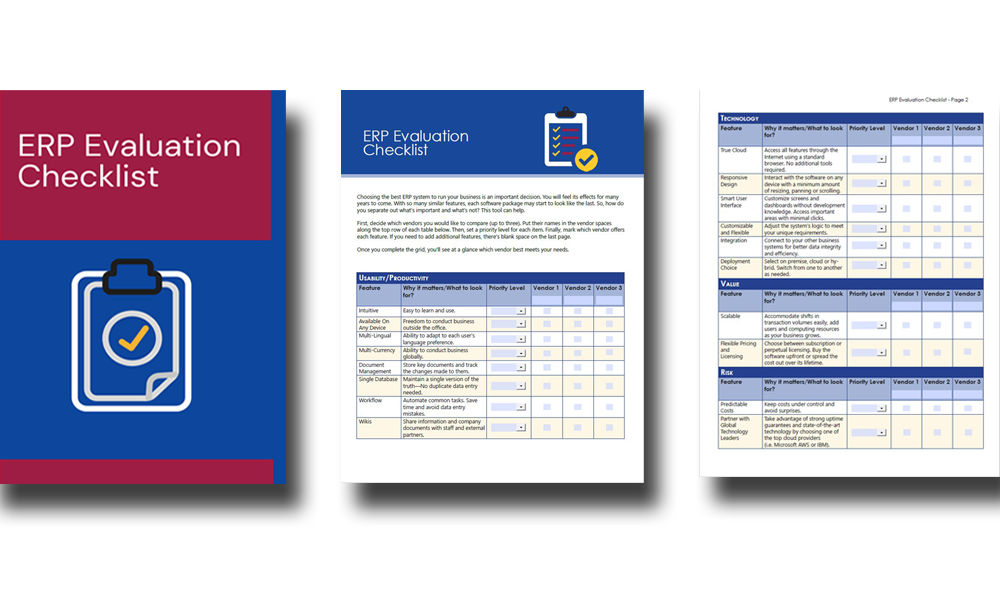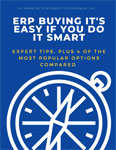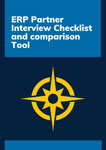Are you embarking on an ERP project? Selecting the right ERP system is a critical decision that can impact your processes and bottom line for years to come.
With so many software solutions to choose from, the software selection process can be overwhelming. And distinguishing one ERP vendor from another might seem impossible.
The last thing you want during the ERP evaluation process is to make a hasty decision you will regret later.
But at first glance so many of these tools seem to share a similar feature set. What are you to do? It can be difficult to know which features on which you should focus your attention.
That’s where our ERP selection criteria matrix comes in.
Our experts designed the ERP Evaluation Checklist to help you navigate the ERP evaluation process. It provides a structured approach to comparing ERP software options.
So, you can focus on important criteria that align with your long-term business needs. The ERP selection criteria matrix enables you to evaluate up to three ERP vendors across 4 crucial areas. These include usability/productivity, technology, value, risk, and key features.

How to use the ERP decision matrix
- Decide which vendors you would like to compare (up to three). Put their names in the vendor spaces along the top row of each table.
- Set a priority level for each item.
- Mark which vendor offers each feature. If you need to add additional features, there’s blank space on the last page.
Once you complete the ERP evaluation checklist, you’ll see at a glance which vendor best meets your needs.
Use it to evaluate ERP systems of your choice across the following:
- Usability/Productivity: Considers how user-friendly the ERP system is and how efficiently it helps users perform their tasks. This includes aspects such as the system’s interface, ease of use, customization options, and the availability of training and support resources.
- Technology: Explores the technical capabilities of the ERP system. Things like its growth potential, compatibility with other systems, and ability to integrate with third-party applications.
- Value: Evaluates the total cost of ownership of the ERP system over its lifetime. This considers factors such as upfront costs, ongoing maintenance fees, licensing fees, and any additional costs associated with implementation and customization.
- Risk: Measures the level of risk associated with implementing the ERP system. This explores factors such as cost predictability and availability of customer references. It also includes aspects such user access controls, strength of included security features and backup and recovery options.
- Key Features: Assesses the specific ERP functionality and features offered by each system. This covers areas such as financial management, inventory management, supply chain management, CRM, HR management, and reporting capabilities.
Plus, the ERP decision matrix is customizable. So, you can easily add other dimensions important to your business.
Bottom line
Ultimately, the ability of your team to make a well-researched decision during the ERP selection process will have long-lasting effects. By using our ERP evaluation checklist and selection criteria matrix, you can jumpstart your software selection process. Allow it to guide you to the right ERP solution for your business, and enjoy the benefits of an efficient and effective ERP system.
Intelligent Technologies, Inc. will never sell or rent your information. We will only use the details you provide to us to contact you about our products and services. You may unsubscribe from these communications at any time.



